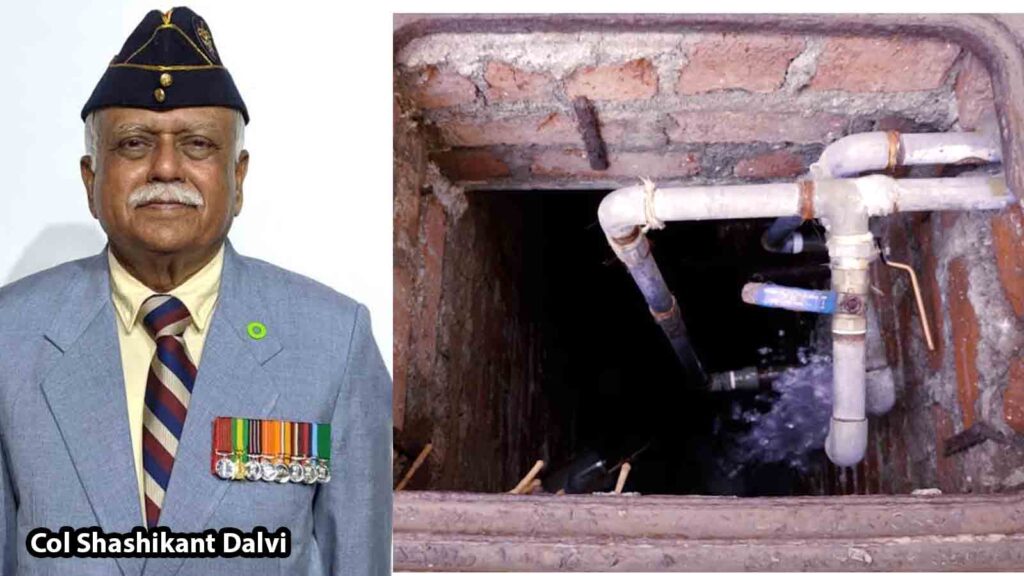Need and Benefits of Rooftop Rain Water Harvesting

Pune: Water Conservation to Fight Present Water Crisis
Planet Earth is an Aqueous Planet. 75% of Earth’s surface is covered with 97% of available water on the planet. Out of balance 3% of water only 1% is fresh water. The quantity of water is
finite and fixed quantity. India’s fresh water share is only 4%, where as our population is 18% of
the World’s population. Basically , Agriculture,Industry and Domestic, are three users.
With rising population demand for water is increasing rapidly. India’s water demand will be twice the
present supply by 2030. Unfortunately we have no respect for this Mother Nature’s freely
available elixir of Life, WATER.This has resulted in badly polluted Surface water including
Ocean Water, rapidly depleting Groundwater due to unsustainable over extraction.this is
reducing availability of fresh water for all the users.
As per NITI Aayog report, around 600 million Indians are facing extreme Water Crisis.
Rain water is the primary source of water on our Planet. Unfortunately we have forgotten
potential of rain water to tide over our water crisis. 100 mm of rain fall on 1000 sq ft of any
catchment area helps collect 10,000 liters of Nature’s bounty. Average rainfall varies from place
to place. World’s average rainfall is around 840 mm annually, whereas it is around 1100 mm for
India. Every place has different rain water potential due to this. Pune receives around 750 mm
of annual rainfall, so the potential is around 75,000 liters per 1000 sq ft of catchment area.In
Mumbai this potential is around 2.50 lakh liters annually. Unfortunately the majority of citizens
are not aware of this natural wealth, hence ignore the rainfall benefits.
This creates Need for Rooftop Rain Water Harvesting ( RWH). Every building big or small, hut,
bungalow or multi story complexes have ROOFTOP as a CATCHMENT AREA and DOWN
TAKE PIPES ,to transport rainwater from rooftop to ground level. RWH system has basically
following components,, Rooftop, Down take pipes, filter media and Storage. Once assembled
rain water is channeled into underground aquifers, this helps raise the ground water table. Now
your system which does not require any mechanical or Electrical energy is ready for long use. A
very simple, economical and doable groundwater recharge system.
In March 2002, Col Shashikant Dalvi bid farewell to arms and settled in Viman Nagar, a suburb
of Pune. Our housing society, Lunkad GreenLand 2, was in shortage, buying 3 water tankers
daily. As a Chairman of the society, Col Dalvi proposed members to implement the RWH system
in the society. 12,000 sq ft of our society rooftop catchment area was collecting annually around
900,000 liters of rain water. Our society bore well water level before implementation of RWH
Project stood at a depth of 225 ft. In Jun 2003 we implemented the First Multi Story Complex
RWH System , of Maharashtra,in his society.. By July 2003 his society became Tanker Water
Free. Our next major benefit was the rise in our Groundwater table from 225 ft to 60 ft now
in2020. Borewell yield increased from 30 min per day in 2003 to 9 hours a day now. For our
society it was bye bye to Water Shortage for the last 21 years and the counter is still on. Along
with this our society’s carbon emission is reduced by around 30 metric tonnes annually.
Since then Col Shashikant Dalvi started his journey to spread awareness and help citizens to
implement RWH systems. If we could make our society Tanker Water Free, then all others too
can do it. Till date Col Dalvi has taken this mission to 6 States, in both Rural and Urban areas.
Till date he has successfully helped complete more than 650 projects, this not only has raised
the ground water table but also reduced carbon emissions about 7100 metric tons annually. . All
the feedback on the project indicates complete success.
Benefits of RWH– they are following
- Rise in groundwater table
- No more Water Shortage
- Reduction in Energy bill, thus reducing Carbon foot print
- Zero dependency on Tanker Water, saving money as well as Carbon Foot Print.
- Rise in soil moisture content
Enclosing 2 minutes video on RWH system. This video explains the system in a simple way.
Sharing this video in three different languages,
English, Hindi and Marathi. These Videos are in house production by Dalvi Family.
Feel free to contact for any clarification. Kindly share your feedback.










